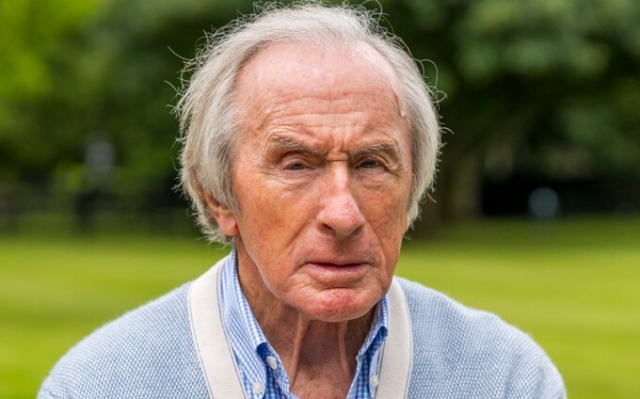 Sir Jackie Stewart: “I have no desire to suddenly stop going out at night or give up what I like. Life is too short for that.» Photo: Andrew Crowley.
Sir Jackie Stewart: “I have no desire to suddenly stop going out at night or give up what I like. Life is too short for that.» Photo: Andrew Crowley.
Sir Jackie Stewart is convinced that he will have dementia. When the wife of Formula 1 racing legend Helen, who was diagnosed with an insidious disease almost ten years ago, is being treated in the next room, he suddenly declares: “You know, I can get sick easily. I have everything for this. Sometimes I forget people's names and I'm not as smart as I used to be. If I have it, I have it.
“I’m still fine,” he insists, despite suffering a mini-stroke six weeks ago while in Jordan ahead of the wedding of Crown Prince Hussein, eldest son of King Abdullah II and Queen Rania.
“I don’t claim to have it. But I probably will. Dementia is the leading cause of death in the UK. Of all those born today, one in three will die of dementia.”
This frightening statistic became reality for the Stewart family in 2014, when they not only learned the devastating news that 82-year-old Lady Stewart was suffering from frontotemporal dementia, but that there was no cure.
After meeting the teenagers at Dino's Café in their home town of Helensburgh in Dunbartonshire, Scotland, Lady Stewart became her husband's stopwatch for over 60 years — her razor sharp the mind literally measured his circles down to the millisecond with unshakable accuracy.
The couple, who have two sons and nine grandchildren, traveled the world together while Sir Jackie raced in Formula One from 1965 to 1973, winning three World Drivers' Championships and finishing second twice in those nine seasons. Nicknamed «The Flying Scot», he was the only British driver to win three championships until Lewis Hamilton in 2015. At 84, he is the oldest living F1 winner, and his penchant for plaid hats and matching trousers remains a hallmark of the circuit. After he retired from racing in 1973, Lady Stewart supported his successful campaign for greater safety — on the race track and on the roads — often joking: «He wouldn't have been world champion without me!» Helen and Jackie in 1965 Photo: Hulton Archive
But it was after Lady Stewart was involved in an unexplained car accident in 2014, despite the fact that the road was clear, that they began to suspect that something was wrong. Later that year, she was diagnosed at a routine health check. Sir Jackie insists that all of his friends and family have an annual checkup at the world famous Mayo Clinic in Rochester, Minnesota. The move saved the life of his eldest son, Paul, when he was diagnosed with non-Hodgkin's lymphoma of the colon in 2000 at the age of 34.
Lady Stewart receives round-the-clock care from seven neurological nurses, whether they are in Buckinghamshire or in their four-story home on Lake Geneva. house in Switzerland, which he equipped with state-of-the-art sensors so that Lady Stewart does not stumble when she is awake at night.
We meet at Clayton House, the couple's palatial home set on 140 acres of Chiltern Hills. Purchased in 1996, this is the former hunting farm of the neighboring country home of the Prime Minister's Chequers. Serviced by a butler — one of more than a dozen domestic workers who take care of the Stewarts' day-to-day needs — the house is filled with photographs and souvenirs from the couple's unusual life in the fast lane. Scattered around the immaculately manicured lawns are 57 wooden benches, each carved with the name of a former driver Sir Jackie knew. In the main courtyard there is a bench dedicated to his «friends», Queen Elizabeth II and the Duke of Edinburgh, who regularly came to dine.
“The hardest part was saying there was nothing we could do about it,” says Sir Jackie. “I knew nothing about dementia before Helen was diagnosed. And when I asked them, «When can we do something about it?» they said, «I'm sorry, Jackie, we don't have a cure for this.» It was just awful.”
Instilling a Formula One attitude towards lateral thinking and pace, Sir Jackie founded Race Against Dementia in 2016. The global charity funds and trains the world's brightest dementia scientists, supporting their work with £500,000 over a five-year program to become leaders in their field. Training focuses on teamwork, innovation, sustainability and attention to detail.
“I started to realize the power of Formula One in dealing with Helen's illness,” he explains. “When you are a racer, everything happens very quickly. In Britain, we lead the world in terms of technology. And when I compare that to my wife, who is 60 years old now, I can't believe that in what is now claiming more lives than anything else in the world, including cancer, we are so far behind. Seventy years and still no cure. The institution failed in this. So we're reaching out to young graduate students to try and find answers.»
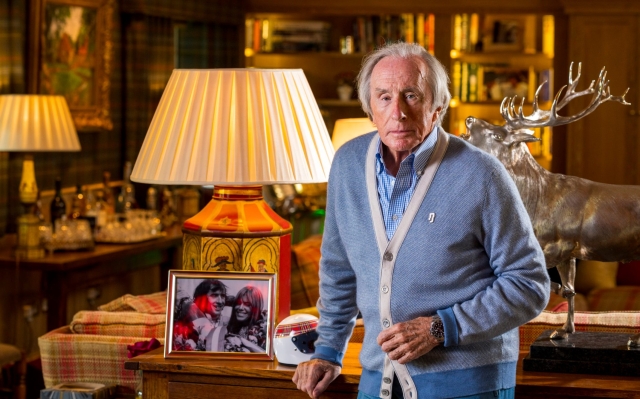 Sir Jackie Stewart at his home in Clayton House. Photo: Andrew Crowley
Sir Jackie Stewart at his home in Clayton House. Photo: Andrew Crowley
The charity is funding 17 researchers, along with multimillionaire Sir Jackie (thought to be worth in excess of £50m), who is believed to have donated at least £2m of his own money. The charity has teamed up with the James Dyson Foundation, and the inventor's engineers are helping to analyze brain samples at the atomic or molecular level, using their own equipment and expertise, usually focused on battery research. Dyson's wife, Deirdre Hindmarsh, now serves as a graduate student tutor.
We're talking the day after the discovery of a cure for dementia patients. Donanemab has been hailed as a «turning point in the fight against the disease» after it was found to slow «clinical deterioration» in Alzheimer's patients by up to 35 percent, allowing people with the disease to continue daily tasks such as shopping, housekeeping, managing their finances, and taking medication. This comes after clinical trials last year found that lecanemab, another drug that targets amyloid, slows cognitive decline in early-stage Alzheimer's patients by 27 percent.
Sir Jackie is urging the government to approve the drug for use in the UK «faster than ever before.» But he cautions: «What we have now is something that delays symptoms, but it's not a cure.»
“If it had been offered to Helen, we would have taken it right away. I'm not pessimistic, but this is the cure we need. And I'm sure we'll find it.» Unfortunately, it will be too late for Lady Stuart, whose condition has deteriorated markedly in recent months. “At five o'clock in the evening she will stop talking, not only will she be silent, but she will not be able to say anything,” Sir Jackie sighs.
Six warning signs of dementia
“Today we had lunch with a friend and chatted about Sean Connery, who was a good friend of ours. Sean had dementia. And Helen gasped and said, «He didn't have dementia.» And I said, «Yes, honey.» She said, «Like Sean,» and I said, «Sean died, baby.» And she was ready to burst into tears.
“There are things that she no longer considers normal. Today, for the first time, I saw that she did not go to her office at all. We have a beautiful living room and a very beautiful TV room, but Helen will be in the greenhouse. She doesn't want to sit in the garden either. It's sad to see her get frustrated when she can't do anything for herself.»
Does she still recognize you? «Oh, yes. And she knows where she is. We travel with two nurses. We have specialized care 24 hours a day. I'm lucky that I can have the best people. I can afford it, but only because I was once a race car driver. The houses I go to, where others suffer, it's so depressing. I have two mechanics who helped me become a world champion — they have dementia, and there is nothing we can do about it. moves me.
“In Formula 1, you will have the best team to identify the problem and solve it. [Between each Grand Prix there are thousands of changes to make the next race even better.] That's the approach we need to take to this. It's a race against time.»
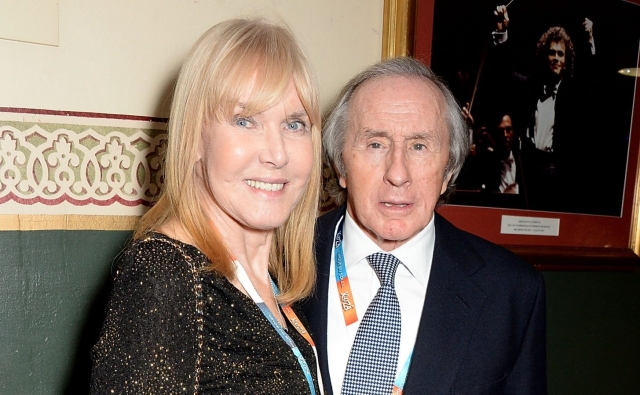 Helen and Jackie in 2015. Photo: David M. Bennett/Getty Images
Helen and Jackie in 2015. Photo: David M. Bennett/Getty Images
Sir Jackie, severely dyslexic but not diagnosed until adulthood, left school at 16 without qualifying. “I didn’t do well in school, but I was good at sports,” he says. “Catastrophe – no education. I don't know the Lord's Prayer. I don't know the words to the national anthem.
“I can neither read nor write. But I'm good at creating new things.»
Showing me an area adorned with animal sculptures and two totem poles, he adds, «The place was a mess when we bought it.»
I wonder if this is his spiritual home? «Ah, this must be Scotland, right?» Does he support independence? «No. Scotland is too small for that.»
Sir Jackie was born in Milton, Dunbartonshire in 1939. John Young Stewart's wealthy family was a car dealer and built a successful business selling first Austin cars and then Jaguar. -at Great Britain in 1953 at Silverstone.
After leaving school, Sir Jackie began working in his father's garage as a mechanic's apprentice, being criticized by his classmates for being «dumb» and «fat».
He only discovered he was dyslexic in 1980, when he was 41, after his youngest son, Mark, was diagnosed. “When you're dyslexic and you find something you're good at, you put more into it than anyone else; you can't think like smart people, so you always think outside the box,» he once said.
Having won a shooting shovel competition at the age of 13, Sir Jackie joined the Scottish shooting team and won numerous championships, culminating in the 1960 Summer Olympics when he placed third in shooting skeet. He started racing at the age of 20 after a client asked him to test cars at Oulton Park in Cheshire, and he started winning so many races that he caught the attention of Ken Tyrrell, who was running the Formula Junior team at the time.
Sir Jackie jokes that he got into car racing thanks to Lady Stewart. “Women are precious,” he winks. After winning the Formula Three race by 44 seconds, he was immediately offered a place in Formula One, but turned it down, seeking to hone his driving experience by training at Le Mans. But in 1965 he signed his first £4,000 contract to race Formula One cars alongside Graham Hill and four years later he won his first World Championship. He remains the only driver to lead at least one lap in every Grand Prix that year.
He won the title again in 1971 despite suffering from glandular fever and crossing the Atlantic Ocean 186 times due to media obligations in the United States. When he won again in 1973, he was awarded the MBE.
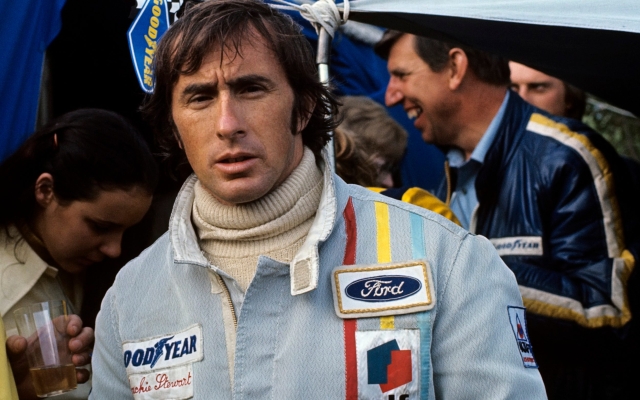 Stewart has won the Formula One World Drivers' Championship three times. Photo: Bernard Cahier
Stewart has won the Formula One World Drivers' Championship three times. Photo: Bernard Cahier
He intended to retire later that year, but after his teammate François Cevert died in a crash during practice for the US Grand Prix, he retired one race earlier than planned and missed what was to be his 100th Grand Prix. In total, he scored 27 wins and 43 podiums.
I ask him what was the worst crash he's ever witnessed, and he quotes Sever, who raced down the track at 150 miles an hour and hit the outer guardrail almost head-on, killing him instantly. Sir Jackie was at the scene and later said: «They [the marshals] left him [in the car] because he was clearly dead.»
He had already campaigned for improved safety after a 165 mph crash at Spa-Francorchamps in 1966, only to find that there were no doctors or medical facilities on site. He lobbied for improved emergency services and improved safety fences around race tracks, and later revealed that he received death threats amid criticism that his campaign had detracted from the sport. “I would have been a much more popular world champion if I had always said what people wanted to hear,” Sir Jackie later said. «I may have been dead, but definitely more popular.»
He returned to Formula One in 1997 with his own Stewart Grand Prix team set up by his son Paul, which was subsequently bought by Ford, earning Sir Jackie £100 million. Subsequently, the team became known as Jaguar Racing, and in 2005 — Red Bull.
Commentary and commercial opportunities have also grown thick and fast, as Sir Jackie has raised lucrative alliances with the likes of Ford and Heineken, as well as remaining one of the longest-serving ambassadors of the Rolex gig, which has seen him attend virtually every watch brand-sponsored Wimbledon finale since he signed on in 1968. Prix went viral in May. Everyone is talking about it! he giggles. “The guard was just doing his job, but he won't do it again. I know that I have permission to go wherever I want (at the Grand Prix).”
Commenting on Carlos Alcaras' sensational five-set victory over Novak Djokovic in the men's singles final, he says: “I love Wimbledon. I have been privileged to take a front row seat in the Royal Box. I couldn't go this year because I was at Goodwood, but I managed to catch the end of the match.”
What does he think of Djokovic, who broke his racket in desperation? «It was a mistake. He should have apologized for it in his speech.»
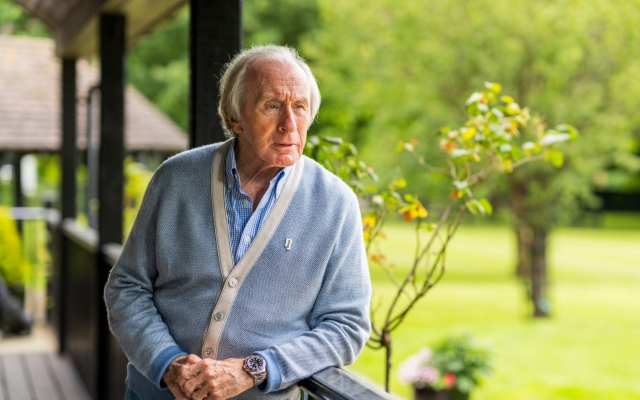 Sir Jackie Stewart at his home in Buckinghamshire. Photo: Andrew Crowley for The Telegraph
Sir Jackie Stewart at his home in Buckinghamshire. Photo: Andrew Crowley for The Telegraph
Shooting, motor racing and regular appearances in the Royal Box, as well as a love of horses, brought Sir Jackie closer to the royal family.
Describing the late Queen and the Duke of Edinburgh as «friends», he says: «I miss them both very much. She was the most impressive woman I have ever met. There has never been a person with such style and dignity who would know how to balance his power and influence, pleasantly and comfortably.
“She carried the nation on a global scale in a way that no other monarch could. For some reason, we had an unusual relationship. She was a wonderful woman. I was privileged to know her.»
She was also, according to Sir Jackie, «a good driver» but «never liked car racing.» He adds: “They both came to dinner and then she came to dinner after he [the Duke of Edinburgh] died. She only came with a policeman, and we had lunch in the cafeteria, and then we took her to Helen's hut (an annex on the territory) for coffee.
Talking about how the Queen was a skilled checkers player who «moved pieces like a machine gun,» he recalls: «We talked about family, we talked about art.»
Like her late majesty, Sir Jackie is still working well past retirement age and shows no signs of wanting to put her feet up. After the summer, he should attend the Dutch Grand Prix in Zandvoort. However, a recent transient ischemic attack (TIA) appears to have slowed him down, perhaps for the first time in his long and eventful life.
«On Monday, I didn't get out of bed until noon.» This is fine? «Not at all. I'm cutting back. At the last Grand Prix, I used to go to Silverstone for three days, and now I'm going to two. It was the same with Goodwood.
«I have no desire to suddenly not go out at night or give up things that I like. Life is too short for this.»
With these words, an octogenarian goes to a course of physical therapy to warm up before the next chicane.
For more information about Race Against Dementia visit raceagainstdementia.com



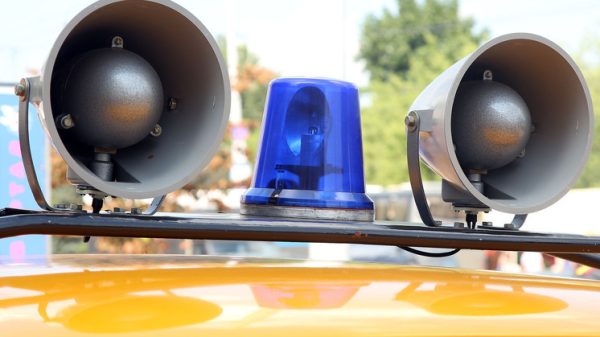



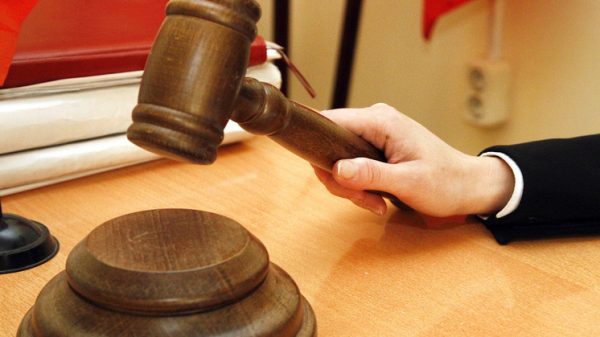
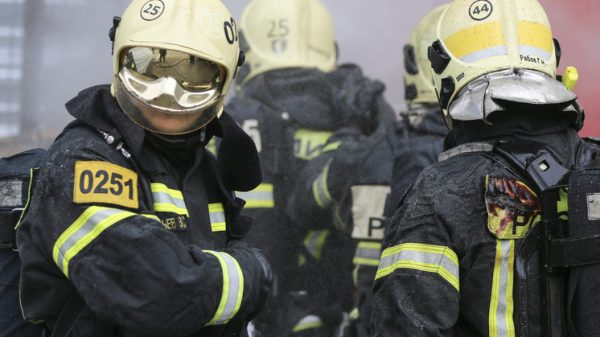




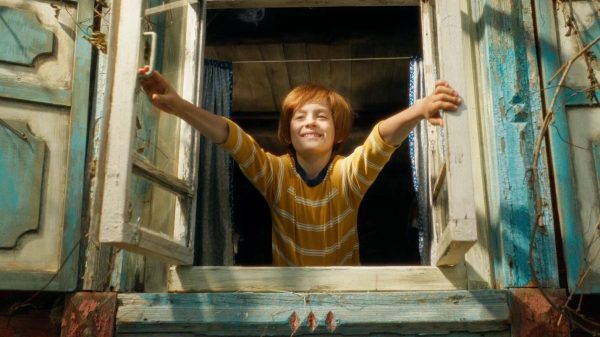


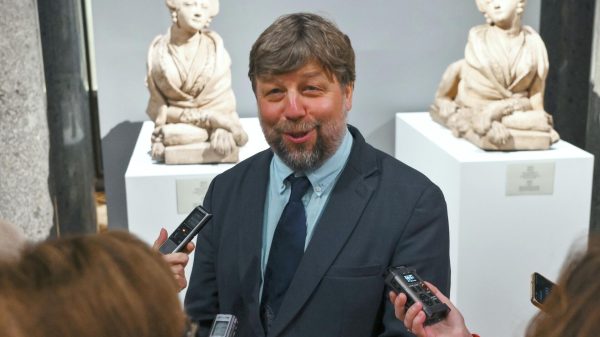

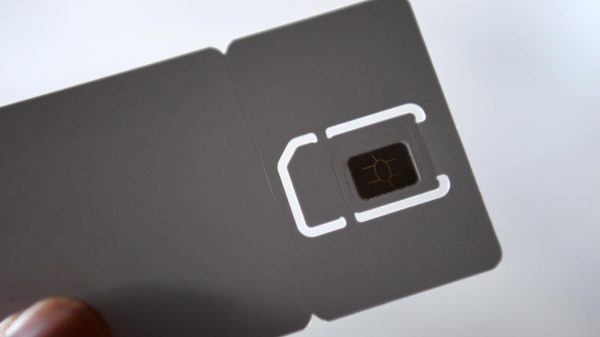







































Свежие комментарии